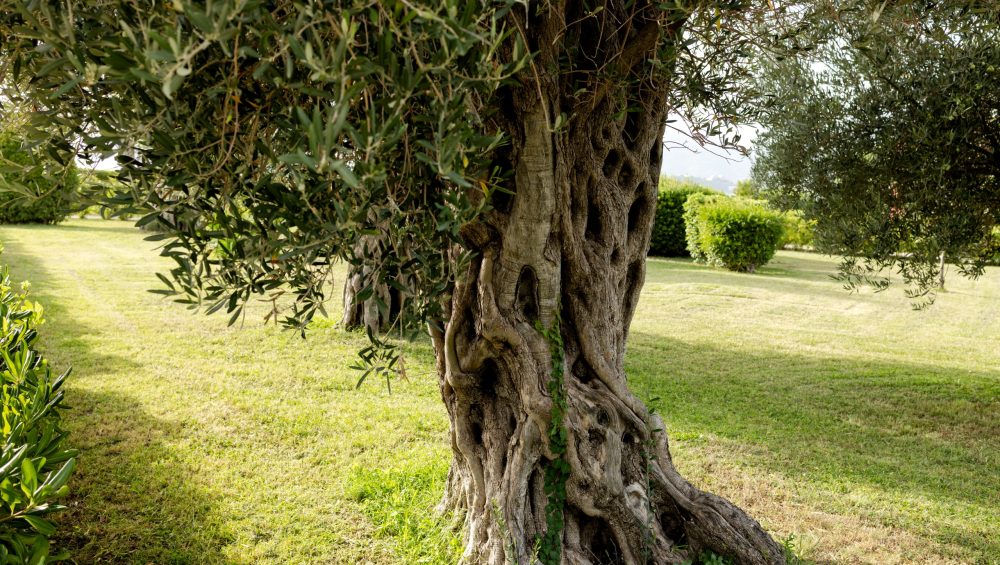The olive tree is not just a plant but a timeless symbol in mythology and art, carrying a deep connection to human history. Reflecting the serene breeze and wisdom of the Mediterranean, olive trees have been regarded as sacred and aesthetic objects for thousands of years. With their powerful symbolism in mythological tales and inspiring representations in art, olive trees hold a profound place in humanity’s collective memory. In this article, we explore how the olive tree has been a source of inspiration in mythology and art.
The Olive Tree in Mythology: A Symbol of Peace and Wisdom
In Greek mythology, the olive tree symbolizes peace, wisdom, and immortality. One of the most famous stories traces back to the naming of Athens. Athena and Poseidon competed to give a name to the newly founded city. Poseidon struck the ground with his trident, creating a saltwater spring, while Athena planted an olive tree symbolizing peace and abundance. The people found Athena’s gift more valuable and named the city after her. This tale elevates the olive tree from a mere plant to a universal symbol of wisdom and peace.
In Roman mythology, the olive tree played a central role in peace treaties. Figures carrying olive branches frequently appeared in sculptures and coins as symbols of peace. In Homer’s epics The Iliad and The Odyssey, the olive tree serves as a motif linking gods and humans, underscoring its sacred significance.
The Olive Tree in Art: A Source of Inspiration and Beauty
The olive tree has inspired artists across eras. In ancient Greek vases and Roman frescoes, olive branches often appear, linked to mythological narratives and divine interventions.
During the Renaissance, the olive branch was prominently featured in religious paintings as a symbol of peace and forgiveness. For example, in Michelangelo’s Sistine Chapel frescoes, the story of Noah’s Ark includes a dove carrying an olive branch to signify peace and renewal. This image embodies humanity’s hope and the promise of new beginnings.
Modern artists also found inspiration in the olive tree. Vincent van Gogh’s famous Olive Trees series reflects his love for nature and the intricate beauty of olive groves. Van Gogh used the olive tree as a theme to symbolize life’s cycles, resilience, and nature’s mystical energy.
Olive Trees in Literature: The Voice of Nature
The olive tree has also made its mark in literature, serving as a metaphor or symbol in countless works. Homer depicted it as a symbol of nature’s immortality and human resilience. Similarly, in modern literature, olive trees often represent serenity and the search for inner peace.
The olive tree frequently appears in stories about the Mediterranean lifestyle, symbolizing fertile lands and harmony with nature. For example, in Gabriel Garcia Marquez’s works, olive trees are a powerful motif representing the passage of time and the memories of the past.
The Olive Branch: A Universal Symbol of Peace
The olive branch is universally recognized as a symbol of peace. It is featured in the United Nations logo, symbolizing global peace efforts, and appears on Nobel Peace Prize medals.
The image of a dove carrying an olive branch is widely regarded as a representation of peace and new beginnings. This symbol underscores the olive tree’s deep significance in human history and collective memory.
The Bond Between Nature and Humanity
With its resilience and long lifespan, the olive tree represents the strength of nature. Its roots extend deep into the earth, while its branches reach toward the sky, symbolizing humanity’s enduring struggle for survival. The story of the olive tree reminds us of our profound connection to nature.
In mythology, art, and literature, the olive tree is more than a plant; it is a cornerstone of human history. Representing peace, wisdom, and resilience, this remarkable tree has left an indelible mark on humanity’s collective consciousness.
Drawing Inspiration from the Olive Tree
The olive tree continues to inspire humanity across millennia. Its stories, spanning from myths to modern art, help us rediscover our connection to nature and our past. The wisdom, resilience, and tranquility embodied by the olive tree illuminate not just the past but also guide us toward the future.
If you ever find yourself sitting under an olive tree and listening to its history, you will surely learn a great deal about humanity’s journey. Each leaf of this elegant and enduring tree carries a story waiting to be told.




